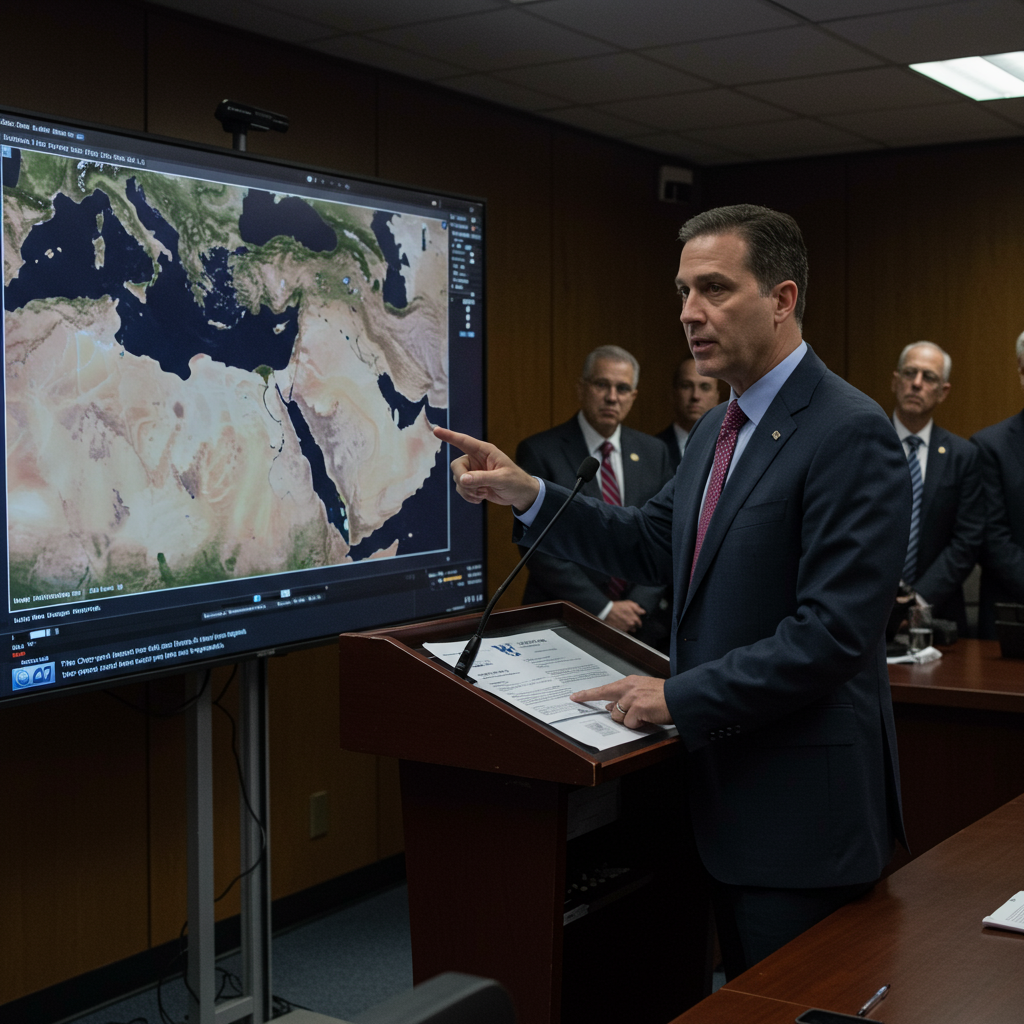Gaza is enduring an unprecedented humanitarian catastrophe, marked by widespread starvation, a collapsing healthcare system, and a devastating toll on civilians seeking basic necessities. Reports from within the besieged enclave paint a grim picture: thousands face critical malnutrition, aid efforts are routinely obstructed, and tragic incidents involving people killed while attempting to access aid continue to rise. This crisis, driven by an ongoing blockade and extensive military operations, has plunged the region into profound human suffering and sparked urgent appeals for international intervention.
Gaza’s Dire Hunger Crisis: A Catastrophe Unfolding
The human cost of the ongoing siege in Gaza is most acutely felt through the escalating hunger crisis. Advocacy groups report that Palestinians are being ‘forcibly starved,’ a chilling reality confirmed by international bodies. The UN Office for the Coordination of Humanitarian Affairs (OCHA) highlights the “catastrophic hunger” gripping families, with children literally “wasting away.” Many die before vital food supplies can reach them. People risk their lives daily simply searching for nourishment, often encountering gunfire. This “unconscionable” situation demands immediate, unimpeded humanitarian access, a legal and moral imperative.
The scale of the crisis is staggering. The Palestinian Health Ministry recently reported at least 86 hunger-related deaths, with a horrifying 76 of these being children. Hospitals, already overwhelmed, receive hundreds of daily patients exhibiting severe hunger symptoms like memory loss and acute energy deficiency. More than 800 children are currently in life-threatening conditions due to malnutrition. Screenings conducted by the UN Relief and Works Agency (UNRWA) between March and June identified approximately 5,500 cases of severe acute malnutrition among children under five. UNRWA directly attributes this surge to the relentless blockade, leaving Gaza’s population in a desperate fight for survival.
Deadly Peril: Civilians Targeted While Seeking Aid
One of the most tragic aspects of the Gaza crisis is the persistent targeting of civilians as they attempt to obtain humanitarian aid. Recent reports confirm at least 92 people were killed today while waiting for aid across Gaza. This brings the total number of hungry aid seekers killed since May to over 900, with more than 5,754 wounded in such incidents. Civilians gathering for desperately needed assistance have been met with deadly force, often near designated aid distribution points.
A particularly controversial mechanism is the Gaza Humanitarian Foundation (GHF), a system that has drawn widespread condemnation. The head of UNRWA has starkly labeled the GHF distribution model a “death trap.” Since its rollout, over 400 people have been killed and 1,000 wounded at these GHF-linked sites. The United Nations has refused to cooperate with the GHF, citing concerns that it prioritizes military objectives over genuine humanitarian needs. Witnesses describe massacres, with tanks and drones firing even as people flee. Despite documented fatalities and international outcry, the United States has committed $30 million to the GHF, which contracts private US military and logistics firms for aid delivery. Human rights and legal organizations strongly condemn the GHF, warning that those enabling or profiting from its operations risk prosecution for complicity in war crimes, including the starvation of civilians.
Collapsing Infrastructure and Forced Displacement
Gaza’s already battered infrastructure is on the brink of complete collapse, exacerbating the humanitarian disaster. Al-Aqsa Martyrs Hospital’s spokesperson, Khalil al-Daqran, issued an urgent plea for fuel supplies, warning that the healthcare system faces imminent collapse. He accuses Israel of deliberately targeting the health sector, with most power generators destroyed and fuel almost impossible to obtain. Hospitals are overwhelmed by patients suffering from hunger-induced exhaustion. Facilities like Al-Shifa Hospital have ceased operations entirely due to fuel shortages, while Al-Ahli Arab Hospital faces imminent shutdown.
Beyond healthcare, the destruction is pervasive. Gaza’s civil defense reports its aid station in al-Mawasi, a so-called “humanitarian zone” in Khan Younis, was directly hit by Israeli fire, killing an aid worker and injuring five others. This marks the eleventh time Israeli forces have targeted civil defense points in “humanitarian” zones since the conflict began. Gaza aid workers have tragically lost 134 colleagues, with 336 more wounded.
Systematic Destruction and “Ethnic Cleansing” Allegations
The ongoing incursions extend beyond Gaza City. In the occupied West Bank, Israeli forces set fire to homes in the Nur Shams refugee camp, east of Tulkarem. The camp has endured a tight siege for over 160 consecutive days, with military vehicles turning evacuated homes into outposts and firing on anyone approaching. Nur Shams has seen widespread demolition, with 48 residential buildings already destroyed, part of a plan to raze over 100 buildings across Nur Shams and Tulkarem camps. Bulldozers have carved wide roads through neighborhoods, displacing thousands. The broader military campaign has forcibly displaced over 25,000 residents from both camps. More than 600 buildings have been completely destroyed, and thousands more partially damaged.
A Human Rights Watch (HRW) report extensively documents Israel’s actions as forced displacement, war crimes, and crimes against humanity. It suggests these actions may even constitute ethnic cleansing. As of October 2024, approximately 90% of Gaza’s population – 1.9 million people – have been displaced. HRW found evacuation orders inconsistent and often issued during communication blackouts. Designated “safe zones” like al-Mawasi and evacuation routes have been repeatedly attacked. The “complete siege” imposed by Israel, cutting off electricity, water, fuel, and severely restricting aid, has led to this catastrophic humanitarian crisis. The systematic destruction of over 60% of residential buildings and 93% of schools, alongside the creation of “buffer zones” and the “Netzarim Corridor,” suggests an intent to prevent Palestinians from returning home, making displacement permanent. Statements by senior Israeli officials indicating a desire to transform Gaza further underscore this intent, leading to concerns among Palestinians that this represents a “second Nakba,” referencing the 1948 displacement.
International Outcry and Political Impasse
The international community, though fractured, has voiced growing alarm over Gaza’s deteriorating situation. UNRWA chief Philippe Lazzarini receives daily messages of despair from his staff in Gaza about the lack of food. He expressed profound shame and helplessness, emphasizing that the crisis is “man-made” and unfolding with “total impunity.” Lazzarini notes UNRWA has enough stock at the borders for three months, but aid has been blocked from entering for months. He urges that “political will is needed. Inaction is complicity & makes us lose our humanity.” Pope Leo has called for an end to the “barbarity of war,” appealing to the international community to observe humanitarian law, protect civilians, and prohibit collective punishment.
Despite escalating calls for de-escalation and unimpeded aid, political obstacles persist. Israeli opposition leader Yair Lapid criticizes current food distribution methods by UNRWA and other international organizations, claiming they “strengthen Hamas” and “only cause deaths.” He suggests Egyptian management of Gaza as a solution. Mediated ceasefire talks have stalled, with Hamas demanding aid distribution be returned to capable international organizations. Palestinian factions, including Hamas and Islamic Jihad, have collectively condemned the crisis as “systematic genocide” through starvation, bombardment, and blockade. They accuse Israel, backed by the US and with silence from European institutions, of aiming to break the Palestinian people’s will. The factions warn that Israel’s actions are war crimes and surpass previous atrocities in scale, urging global mobilization to “stop the genocide” and “end the siege.”
Frequently Asked Questions
What is the current extent of the humanitarian crisis in Gaza?
The humanitarian crisis in Gaza is catastrophic and rapidly worsening. Over 90% of the population, approximately 1.9 million people, are forcibly displaced. Widespread starvation is rampant, with at least 86 hunger-related deaths reported, 76 of them children. More than 800 children are in life-threatening conditions due to malnutrition. Healthcare infrastructure is collapsing, with major hospitals shutting down or nearing closure due to lack of fuel and supplies. Essential services are cut off, and large areas of Gaza are systematically destroyed, making them uninhabitable.
How are humanitarian aid efforts being impacted or obstructed in Gaza?
Humanitarian aid efforts are severely hampered by blockades and direct attacks. Aid trucks and distribution points have been repeatedly targeted by Israeli forces, leading to over 900 aid seekers killed since May. The UN has refused to cooperate with the controversial Gaza Humanitarian Foundation (GHF), calling it a “death trap” due to hundreds of casualties at its sites. Despite critical shortages, UNRWA reports that large stocks of aid remain blocked at borders, unable to enter Gaza due to political decisions. This obstruction prevents life-saving food, medicine, and fuel from reaching a desperate population.
What are the international legal implications of the current situation in Gaza?
International legal and human rights organizations, including Human Rights Watch, contend that Israel’s actions in Gaza constitute war crimes, crimes against humanity, and potentially ethnic cleansing. These allegations stem from actions such as the forcible displacement of civilians, the systematic destruction of infrastructure, and the use of starvation as a method of warfare through a “complete siege” and aid restrictions. Israeli officials’ statements are cited as evidence of intent for these violations. The International Court of Justice (ICJ) has issued provisional measures ordering Israel to provide urgently needed basic services and humanitarian assistance, yet compliance remains a significant concern.
The situation in Gaza remains profoundly urgent, marked by an escalating human tragedy. The combination of forced displacement, widespread starvation, and direct attacks on aid seekers demands immediate, decisive international action. Accountability for alleged war crimes and violations of international humanitarian law is paramount. As calls for unimpeded aid and an end to hostilities intensify, the world watches, hoping for a resolution that upholds human dignity and prevents further loss of life in the beleaguered enclave. The severity of this crisis cannot be overstated, and its long-term consequences will reverberate for generations.


